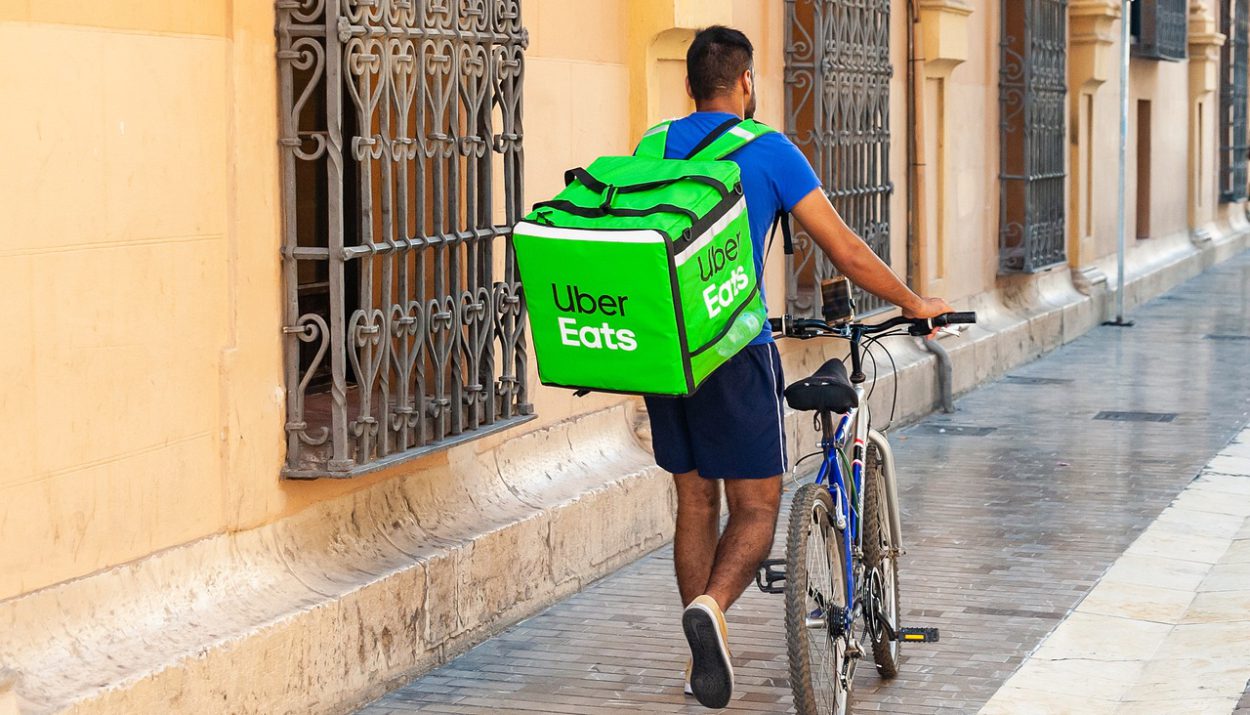The last ten years have witnessed the rise of ride-sharing as one of the most popular ways to gain a flexible income. With Uber, Lyft, and Bolt-type apps available in urban cities worldwide, the idea of simply opening an app, picking up passengers, and being paid appears simple and attractive. But how much can you make with ride-sharing apps?
Although for most, the question is not whether or not driving for such businesses is feasible, but more whether or not it is lucrative. As such, it is necessary to understand the factors that influence the ride-sharing income in the 2025 gig economy.
How Much Money Can You Make Driving for Uber or Lyft Per Hour?
Ride-sharing apps are digital platforms that bring together passengers in need of transportation and drivers who are ready to offer it. The core idea is simple: the passenger requests a ride and determines the fee, and drivers in the vicinity receive the pick-up request. After the ride, the payment is done within the application.
Drivers are paid based on several factors. There is typically a minimum fee that acts as a base fee, and then the per-mile and per-minute fees, which are based on the distance and time one travels. The rate peaks during peak demand, such as rush hour or late-night weekends, which increases the rate and drivers’ income. Other than fares, drivers can also gain tips from customers and be compensated in terms of bonuses or promotions by the platforms.
The company, however, charges a share of every fare in the form of a service fee, typically between 25 and 30 per cent.
Can You Make a Full-Time Income From Ride-Sharing?
One of the most common things people ask about is average hourly pay, but the answer is extremely variable based on location, demand, and hours worked. Uber drivers in the United States average around $23 per hour before costs, with Lyft drivers making around a similar amount. In regulated cities like New York, the amounts are often higher because minimum per-minute and per-mile pay structures are established.
A usual seven-and-a-half-mile half-hour ride in New York, for example, may earn nearly twenty-nine dollars, which implies that the drivers earn almost thirty dollars an hour in such a market. On the West Coast, Los Angeles and San Francisco are well-paying cities, with their rates averaging $20 to $30 an hour based on traffic congestion, demand for riders, and surge pricing.
Full-time Uber drivers in London earn an average of 18 to 22 pounds an hour after expenses, amounting to an annual salary in the mid-thirty-thousand range. Rush hours, including weekday trips during rush hour, Saturday and Sunday evenings, and big public events, result in more money since more passengers request rides simultaneously.
Expenses Ride-Share Drivers Need to Consider
Being a ride-share driver can bring in money, but income is only part of the story. Drivers have many expenses that affect how much they actually earn.
Gas and Fuel Costs
Gas is usually the biggest expense for drivers. Prices go up and down, so what you spend one month might be very different the next. If you drive a lot of miles every day, fuel costs can quickly add up and eat into your earnings.
Vehicle Maintenance and Repairs
Driving thousands of miles every month puts extra wear and tear on your car. Regular maintenance, like oil changes, tire rotations, brake checks, and fixing worn-out parts, is necessary to keep your car running safely. These costs can add up faster than you might expect.
Higher Insurance Costs
Since ride-share driving is considered riskier than regular driving, insurance is more expensive. You might need special ride-share insurance, which increases your monthly expenses.
Vehicle Depreciation
The more you drive, the faster your car loses value. This is called depreciation. Even if you don’t sell your car right away, depreciation is a real cost because it lowers the car’s resale value over time.
Taxes and Self-Employment Responsibilities
As an independent contractor, ride-share drivers are responsible for their own taxes. You’ll need to save for self-employment tax and pay quarterly estimates. If you don’t plan for this, you could face a big bill at tax time.
Corporate Fees
Ride-share companies like Uber and Lyft take a cut of every ride, sometimes nearly 30%. This means you only keep part of the money passengers pay, so it’s important to factor this into your earnings.
How Much Do Uber and Lyft Drivers Actually Take Home After Expenses?
When all of the expenses are removed from the equation, the difference between gross and net profit widens. While the apps show gross averages in the mid to low twenties per hour, drivers regularly report net payments of $15 to $25 per hour, again varying by efficiency and locale.
For example, if the driver earns $23 an hour but travels 20 miles, the IRS cost estimate puts $14 in charges, leaving $9 before tax. Of course, not all drivers have such enormous expenses, but it shows just how much lower gross income falls when the charges are factored in.
Location determines a large part of these numbers. Drivers for high-density, high-demand zones like New York and London have more short trips with a higher minimum fare, reducing empty miles and making them more efficient. In suburban or rural regions where trips are further apart and there is greater downtime between trips, drivers may struggle to make even the minimum fare after covering expenses.
Strategy comes into play as well. The people who understand where and when to place themselves, bring together a lot of platforms, and reduce unpaid driving do much better than random hour workers without a strategy.
Is Driving for Ride-Sharing Apps Worth It in 2025?
It depends on the individual whether the ride-sharing app is worth trying. The flexibility that ride-sharing apps offer cannot be beat. Few jobs allow you to log on when you want, work for as long as you want, and log off the instant something comes up.
Some find the flexibility and pay advantageous, typically students, part-timers, and the unemployed. But the negatives are also significant. Your vehicle can depreciate, shorten its lifespan, incur costly insurance premiums, and cause earnings to fluctuate up and down from one week to another.
The drivers must deal with traffic, demanding passengers, and the physical stress of hours spent sitting. For someone who wants a secure, regular income, ride-sharing can not be viable. It is optimal when paired with other sources of income as compared to being a stand-alone source of revenue.
How Can You Increase Of What You Make With Ride-Sharing Apps?
The ideal strategy to maximize profit is driving during surge hours, where fares are considerably higher. Weekends, airport runs, and big events always yield the highest returns. The drivers utilize other platforms, like Uber and Lyft, or even meal delivery apps like DoorDash or Uber Eats, in order to cut down on downtime and keep them continually booked up.
Professional drivers usually promote judicious route planning, positioning near hotspots with consistent demand, and having precise mileage and expense records. Drivers who treat their career as a business venture and not a hobby earn more ultimately.
Final Thoughts: Should You Drive for Uber or Lyft to Make Money?
Driving for ride-sharing apps is not an instant money trick, but it is a fair and flexible way to earn in 2025. Gross income may seem high, but after accounting for expenses, net income can be much lower. Ride-sharing works well for people who enjoy freedom and want supplementary income beyond a fixed salary. If you enjoy driving and are willing to manage costs, it can be a useful option.
At the end of the day, it comes down to your financial needs and how much effort you’re willing to put in to maximize each mile.
Want to make smarter financial decisions with your earnings? Check out The Finance Gig for tips on budgeting, saving, and growing your income effectively.
FAQS
1. How much can I make driving for Uber or Lyft?
Earnings vary by location, demand, and hours worked. Drivers in busy cities can average $20–$30 per hour before expenses, while suburban or rural drivers may earn less.
2. Can I make a full-time income from ride-sharing?
Yes, it’s possible, but it depends on your strategy, location, and the time you dedicate. Many drivers supplement their income rather than rely on it as their only source.
3. What expenses should I expect as a ride-share driver?
Common expenses include gas, vehicle maintenance, higher insurance, depreciation, taxes, and corporate fees from Uber or Lyft, which can significantly reduce net income.
4. How much do drivers actually take home after expenses?
After factoring in all costs, drivers often report net earnings of $15–$25 per hour. Location, efficiency, and careful planning play a big role in determining take-home pay.
5. How can I maximize my earnings with ride-sharing apps?
Driving during surge hours, planning routes carefully, using multiple platforms, and keeping accurate expense records can help boost profits. Treating driving as a business rather than a hobby also improves results.






